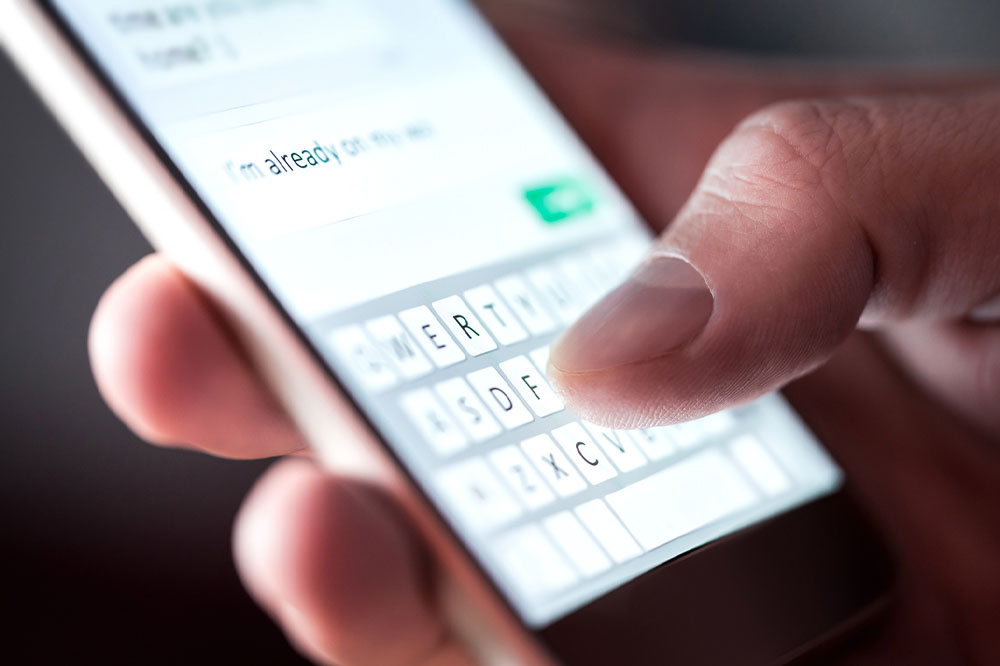Differences between texting and instant messaging
Texting or instant messaging? Which one do you use to chat with a friend? Although people use both terms interchangeably, they refer to two different things. The fundamental difference between text and instant messagin g is that the former uses cellular phone service, while the latter uses an application to send messages via the internet. Besides this, there are several other interesting differences between these two modes. Let us take a closer look.

What is texting?
Texting allows you to send messages to someone using a mobile carrier or cellular phone service. Both sender and receiver need a phone signal to exchange text (sometimes called an SMS). It is found that 66 percent of the world’s population is equipped to receive text messages, so it has a more extensive reach. Our country’s top wireless carriers AT&T, Verizon, and T-Mobile, are working together to create a messaging service that could help replace the standard SMS texting and add a new dimension.
The key points to remember about texting are:
You can send a text to any mobile phone.
There is no need to stay online.
Smartphones are not required.
You do not need any specific apps.
Texting may be slower, depending on the cellular signal.
Sending texts to another country depends mainly on your texting service or carrier.
What is instant messaging?
Instant messaging is the process of sending real-time messages. In other words, you can send and receive messages instantly. It uses software applications that work on the internet, such as Wi-Fi or mobile network connection.
The key points to remember about instant messaging are:
It is generally free, regardless of where the message is received.
There is a need for an internet connection.
You cannot connect with recipients who do not use the same app as you.
You can attach videos, images, and other files with most instant messaging apps.
Differences between text and instant messaging
Many differences between text and instant messaging are apparent from the above points. Here is a closer look at the significant ones:
Character limit
Texts are usually limited to 160 characters, while most instant messaging platforms may not have a limit.
Contacts
You may be able to send a text to any number, even if it is not registered. But with instant messaging, many apps require the connection or number to be a fellow user.
Session duration
Texting has a particular messaging session where sending one text equals one session. But with instant messaging, the session stays open until a member leaves the chat platform.
Devise accessibility
Almost all phones, whether smartphones or not, can send and receive texts. But only those devices connected to the internet, such as tablets and laptops, can handle instant messaging.
Beyond the region
As far as texting is concerned, international coverage is limited depending on the carrier plan. You may need to pay an additional fee for contacting someone beyond the borders. With instant messaging, you can connect with anyone anywhere, as long they have an internet connection.
Types of instant messaging platforms
Instant messaging applications, like WhatsApp, are generally standalone applications that perform multiple tasks, such as SMS, video chat, file sharing, and Voice Over IP. But they are also many specialized applications that serve specific purposes, such as:
Video conferencing
These apps have a small window that can be used to chat with an individual or group members while the call is underway.
Social media
Facebook is probably the most popular social media platform. While its primary purpose is to connect with people and share photographs and videos, you can also use it for instant messaging. This is made possible with the Facebook Messenger app, but you can initiate a chat only with your Facebook friends.
Gaming and streaming
A well-known platform in this category is Twitch, where you may stream live videos and gameplay. The app has a chat window, which enables you to interact and communicate with other users.
Best instant messengers
Besides the above, there are several other instant messaging platforms, such as Viber, Google Chat, Discord, WeChat, Snapchat, Slack, Pidgin, Trillian, and HCL Sametime. The AOL Instant Messenger was once the most famous but was discontinued in 2017. Many of these platforms are also used by businesses for in-house communication and have special features for team discussions and project planning.
The above are some of the most important things to know about text and instant messaging. As you might have guessed, both have their strengths, weaknesses, and unique features. So, it is best to analyze all the aspects and use a suitable option depending on your need.















